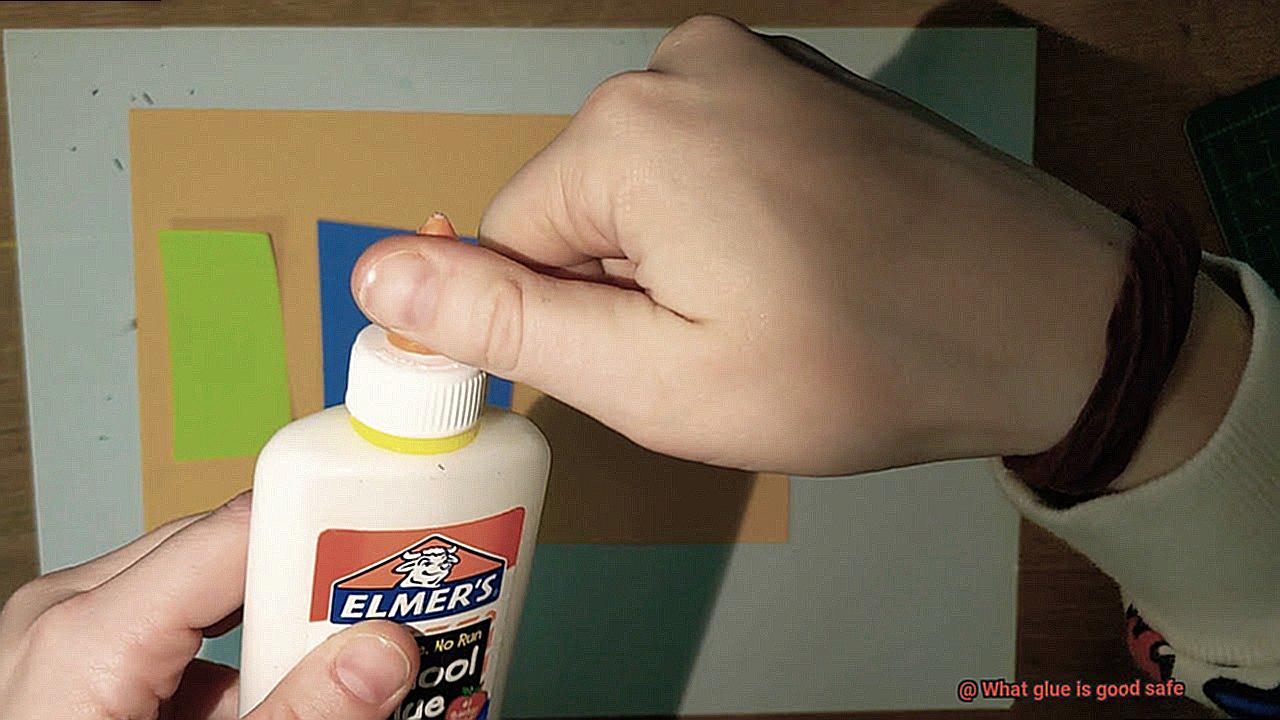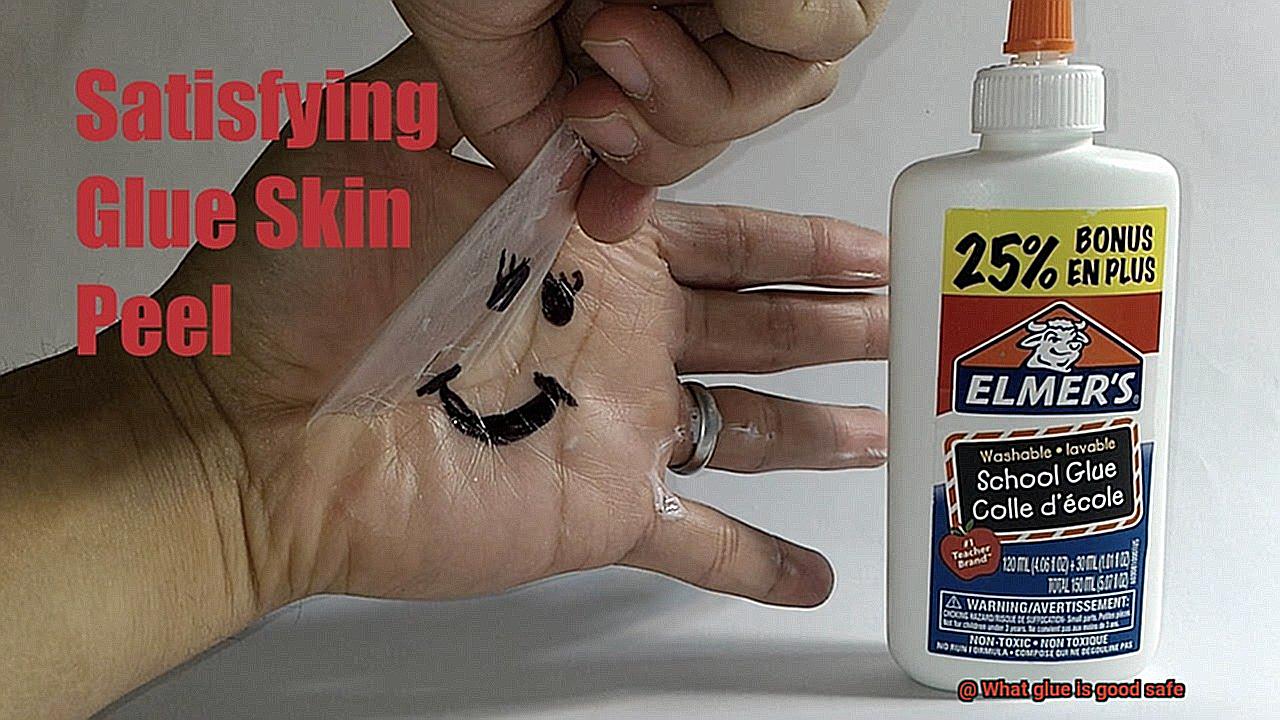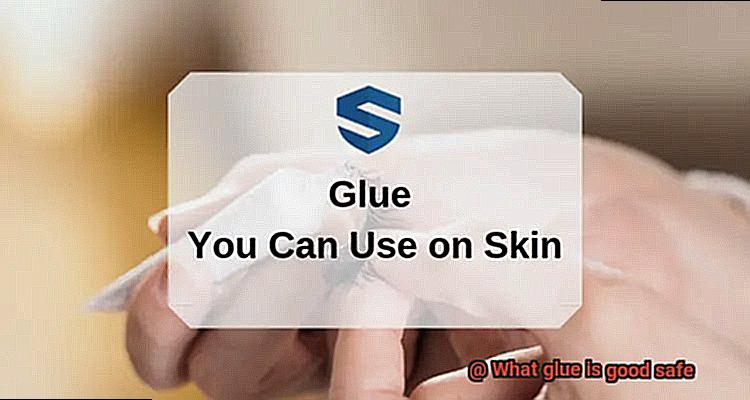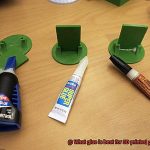Glue, oh glue. It’s the secret weapon in our arsenal for all things crafty, repair-y, and professional. But with so many options out there, it’s like diving into a sea of stickiness trying to find the right one that gets the job done without endangering ourselves or the planet. Fear not. In this blog post, we’ll embark on an adventure through the world of adhesives to uncover the best glues that not only keep things together but also keep us safe.
Safety first, my friend. Whether you’re fixing a broken household item or tackling a high-stakes project like a pro, finding a glue that’s both good and safe is non-negotiable.
So grab your glue gun (or whatever adhesive floats your boat) and join me as we dive into different types of glues. We’ll explore their safety features and discover which ones are perfect for casual crafting or professional wizardry. Together, we’ll navigate this sticky terrain and make informed choices that protect our health and well-being along the way. Let’s get stuck into it.
Types of Glue: Non-Toxic, Low VOCs, and Water-Based
Contents
- 1 Types of Glue: Non-Toxic, Low VOCs, and Water-Based
- 2 Specific Types of Glue: White Craft Glue, School Glue, and Children’s Glue
- 3 Specialized Applications: Wood Glue, Epoxy Adhesives, and Cyanoacrylate (Super Glue)
- 4 Proper Storage and Usage of Glues
- 5 Consult the Manufacturer for More Information
- 6 Things to Consider When Choosing a Safe Glue
- 7 Benefits of Using Safe Glues
- 8 Conclusion

Glue is a versatile tool that allows us to unleash our creativity, fix broken items, and bring our ideas to life. However, not all glues are created equal when it comes to safety. In this guide, we will explore three types of glue that prioritize safety: non-toxic glue, low VOCs glue, and water-based glue.
Non-Toxic Glue: Safe for Little Hands
Non-toxic glue is like a superhero for arts and crafts projects. It is formulated without harmful substances such as formaldehyde, phthalates, or heavy metals. Made from natural ingredients or safe synthetic materials, non-toxic glue ensures a safe bonding experience for both children and adults. Whether you’re creating a paper masterpiece, fabric collage, or wooden sculpture, non-toxic glue has got your back. It is available in various forms such as liquid glue, glue sticks, or adhesive tapes.
Low VOCs Glue: Breathe Easy
Have you ever entered a room and felt overwhelmed by a strong smell that made your head spin? That could be the result of VOCs evaporating from certain glues. However, low VOCs glue comes to the rescue. These glues have minimal levels of volatile organic compounds, reducing the stinky smells and potential health risks associated with them. Low VOCs glue is perfect for woodworking projects and other tasks that require strong bonding capabilities.
Water-Based Glue: Eco-Friendly Magic
Water-based glue is like a refreshing splash on a hot summer day. It is primarily made from water and contains little to no solvents. This makes it non-toxic and low in VOC emissions, making it an excellent choice for those who prioritize their health and the environment. From paper crafts to fabric bonding, water-based glue is versatile and easy to clean up with just water.
Considerations:
While these glues are generally safe, it is important to follow the manufacturer’s instructions and take necessary precautions. Use them in well-ventilated areas to minimize exposure to fumes, avoid direct contact with skin and eyes, and keep them out of reach of children. Safety should always be a top priority, even with non-toxic, low VOCs, and water-based glues.
When it comes to choosing glue, safety is paramount. Non-toxic glue, low VOCs glue, and water-based glue provide options that are safe for both users and the environment.
Specific Types of Glue: White Craft Glue, School Glue, and Children’s Glue
Glue is a magical adhesive that helps us stick things together and create amazing crafts. But did you know that there are different types of glue for different purposes? In this blog post, we will take a closer look at three specific types of glue: white craft glue, school glue, and children’s glue. Each type has its own unique characteristics and uses that make them suitable for specific projects. So let’s dive in and discover which glue is right for your next creative endeavor.
White Craft Glue – The Versatile Wonder:
White craft glue is like a superhero in the crafting world. It can bond a variety of materials, from paper and cardboard to fabric and wood. With its strong bond and clear drying properties, it’s perfect for all your crafting needs. Whether you’re making a scrapbook or building a model, white craft glue is your go-to adhesive. Its versatility makes it a favorite among DIY enthusiasts who enjoy working with different materials. Additionally, white craft glue is water-based, making it easy to clean up any spills or messes during the crafting process.
School Glue – The Classroom Champion:
Next up, we have school glue, also known as liquid glue or white glue. This glue is specifically designed for use in classrooms and art classes. It’s non-toxic and safe for children to handle, making it perfect for all those school projects. With its slower drying time, students have more time to position their work accurately before it sets. This feature is especially beneficial for younger children who may need more time to complete their crafts. School glue often comes in bottles with nozzle or brush applicators, allowing for easy and precise application.
Children’s Glue – Fun and Safe:
If you have little ones who love to get their hands dirty with crafts, children’s glue is the way to go. This glue is specially formulated for preschool-aged children, so it’s extra safe and non-toxic. With its thicker consistency, it won’t drip or run when applied to surfaces, making it less messy for those tiny hands. Plus, children’s glue often comes in fun colors or with glitter added for an extra touch of sparkle. This feature adds a playful element to crafting projects and keeps children engaged and excited about their creations.
Specialized Applications: Wood Glue, Epoxy Adhesives, and Cyanoacrylate (Super Glue)

When it comes to joining wood materials with strength and longevity, wood glue is the undisputed star. With options like white glue, yellow glue, and polyurethane glue, tailor-made solutions await. White glue is a jack-of-all-trades, drying clear while providing a robust bond for general woodworking projects. Yellow glue, the trusted carpenter’s companion, offers even stronger bonds and resistance to moisture. For challenging conditions and gap-filling needs, the expanding magic of polyurethane glue creates an unyielding connection.
Epoxy Adhesives – The Versatile Heroes:
Need an adhesive that can withstand extreme temperatures, chemicals, and vibrations? Look no further than epoxy adhesives. These mighty warriors consist of a resin and hardener that combine forces before application. Brace yourself for exceptional strength as they bond metals, plastics, ceramics, glass – even certain wood types. With remarkable gap-filling capabilities, epoxy can mend cracks and holes before uniting materials in unbreakable harmony.

Cyanoacrylate (Super Glue) – The Swift Savior:
When time is of the essence and repairs call for swift resolution, cyanoacrylate adhesive emerges as your trusty companion. Known as super glue for good reason, it forms an instantaneously formidable bond. Metal, plastic, rubber, ceramics – even some fabrics succumb to its adhesive prowess. However, tread carefully with porous materials or surfaces that experience substantial movement, as super glue may turn brittle over time.
Choosing the Perfect Adhesive:
To find the adhesive that perfectly suits your application, consider factors like the materials you wish to bond, desired strength and durability, and any resistance requirements. Always adhere to the manufacturer’s instructions for proper application and safety precautions.
Proper Storage and Usage of Glues
Achieving strong bonds and avoiding sticky situations when using glue requires more than just slapping it on and hoping for the best. To ensure the adhesive’s effectiveness and your safety, it is crucial to follow the manufacturer’s instructions, practice proper storage, and take necessary precautions.
Let’s start with storage. Glue, like a delicate elixir, demands a cool and dry abode. Exposing it to excessive heat or moisture is like condemning it to a slow demise, causing it to deteriorate or lose its adhesive powers. And remember, once you’re done wielding your glue in creative conquests, seal its container tightly to shield it from the cruel hands of evaporation.
Now, let’s delve into the realm of usage. Each type of glue possesses its own set of desires and demands. Wood glue for carpentry projects seeks patience, requiring ample drying time to achieve its full potential. Epoxy adhesives, designed for extreme conditions, crave meticulous application techniques for unyielding bonds. And the ever-instantaneous cyanoacrylate adhesive commands your attention, demanding precision and swift action.
But wait. Before you embark on your glue-filled adventures, arm yourself with knowledge about safety measures. Some glues emit fumes that can taint the air with toxicity. To protect your precious lungs, find solace in well-ventilated spaces or don a mask fit for a chemist extraordinaire. And don’t forget to keep those toxic temptations out of reach from curious children and mischievous pets who may mistake them for delectable treats.
In the unfortunate event of accidental contact, time becomes your ally. Wash the affected area promptly with soap and water as if cleansing away the remnants of an imprudent adventure. And if those mischievous glues dare to invade your eyes, flush them with water for at least 15 minutes, seeking medical attention to ensure a truly happy ending.
Now, let’s not forget about the glue’s final chapter – its farewell. Glue, with its hazardous chemicals, cannot be tossed casually into the abyss of regular household trash. Instead, consult local regulations to discover the proper disposal methods or seek out recycling options for an eco-conscious goodbye.
And lastly, remember that even glue has an expiration date. Over time, its adhesive properties may fade like a setting sun, leaving you with weak bonds and failed projects. So, embrace the power of dates and bid farewell to expired glues to ensure your creative endeavors remain steadfast.
Consult the Manufacturer for More Information
Glue is the enchanting elixir that brings our creative visions to life, but using the wrong glue can turn our dreams into a sticky disaster. That’s why it is imperative to consult the manufacturer before embarking on any glue-filled endeavor.
In this article, we will unravel the secrets of glue, explore its diverse types, discuss potential hazards, and unveil how reaching out to the manufacturer can rescue your masterpiece from becoming a gloopy catastrophe.
The Glue Conundrum:
Finding the perfect glue for your project is akin to discovering a compatible partner – it requires compatibility and understanding. With an array of glues at your disposal, from epoxy adhesives to wood glues and super glues, navigating through the options can feel like being adrift in a vast sea.
Each type possesses unique properties and recommended applications, making it essential to consult the manufacturer for expert advice tailored to your specific needs.
Steering Clear of Sticky Mishaps:
Using the wrong glue can be hazardous, both to your project and your well-being. Picture attempting to bond plastic with a glue designed for metal – it’s a recipe for disaster. The manufacturer is your guiding beacon, offering insights into potential hazards associated with different glues and providing recommendations for safe usage conditions. Don’t let ignorance be the downfall of your project; seek the expertise of the manufacturers.
Achieving Bonding Brilliance:
Consulting the manufacturer not only helps you avoid mishaps but also unlocks the secret to achieving a bond that withstands the test of time. They possess extensive knowledge about their products, including compatibility with various materials and optimal application techniques. By tapping into their wisdom through consultation, you can discover the glue that will make your project shine.
Safety as a Top Priority:
Glue isn’t just sticky; it can also pose health risks if mishandled. Manufacturers conduct rigorous testing and research on their products, ensuring compliance with safety standards and regulations. By consulting them, you gain access to valuable information about safety precautions, potential allergies, and proper storage and handling techniques. Protect yourself and your loved ones – let the manufacturer be your safety guardian.
Things to Consider When Choosing a Safe Glue
Choosing the right adhesive can be a sticky situation, but fear not. I’m here to share some expert advice on the things you should consider when choosing a safe glue.
First and foremost, check the ingredients. Look for glues labeled as non-toxic and free from harmful chemicals like formaldehyde, phthalates, and volatile organic compounds (VOCs). Keep these nasties away from children and pets.
Consider the odor. Some glues emit strong, unpleasant odors that can irritate your respiratory system. Opt for low odor or odorless glues to make your crafting experience more enjoyable.
Think about the intended use. Different glues are designed for specific materials and applications. Use white or school glue for paper or cardboard projects, but for wood or metal, you’ll need stronger adhesives like epoxy or construction glue.
Drying time matters too. Some glues dry in a flash, while others take longer. Make sure the drying time matches your project requirements and gives you room to adjust before it sets.
Durability and strength are crucial. You want a glue that creates a bond that can withstand regular use or handling. Check the label for strength and durability information.
Application method is important too. Some glues come in tubes with applicator tips, while others need brushes or spatulas. Choose what works best for you.
Research user reviews and feedback for insights into safety and effectiveness.
Lastly, consider the price. Safety and quality are important, but also keep your budget in mind.
Benefits of Using Safe Glues
Navigating the vast sea of glue options can be a sticky situation. In this blog post, we will delve into the captivating world of safe glues, exploring their remarkable benefits. From their non-toxic formulation to their effortless clean-up and unparalleled bonding capabilities, safe glues are the gold standard for any artistic endeavor. So, let us embark on this journey of discovery and uncover why safe glues are the ultimate choice for both creativity and safety.
Safety First: Preserving Well-being in Every Drop
Safe glues are like guardian angels, shielding us from the perils of harmful chemicals. Unlike their toxic counterparts, safe glues are non-toxic, ensuring that they do not pose any danger if ingested or inhaled. This attribute is especially crucial for children, who innocently stumble upon glue during arts and crafts activities. By opting for safe glues, you guarantee their safety and minimize the risk of any adverse health effects.
Environmental Friendliness: A Green Revolution in Every Bond
Traditional glues often emit volatile organic compounds (VOCs), contributing to indoor air pollution and environmental degradation. In stark contrast, safe glues boast water-based or natural ingredients that are gentle on both our well-being and the planet. By embracing safe glues, you become an advocate for a healthier future, making a positive impact on your health and the environment simultaneously.
Easy Clean-Up: Banishing Stickiness with Grace
Picture this: you’ve completed a beautiful craft project only to be left grappling with stubborn remnants of traditional glue. Fear not. Safe glues come to your rescue with their water-soluble nature. Gone are the days of tedious scraping and scrubbing; safe glues can be effortlessly cleaned up with mere soap and water. This exceptional characteristic proves especially invaluable when engaging in activities with children, eliminating the hassle and potential damage caused by sticky residue.
Versatile Options: Safe Glues Tailored to Your Creative Pursuits
Safe glues do not merely offer safety; they present a world of possibilities. Crafters, artists, and creators of all kinds can rejoice as safe glues come in a wide array of options designed for various applications. Be it paper crafts, fabric projects, or woodwork, you can find a safe glue specially crafted for your needs. These specialized options ensure that you never have to compromise safety or performance in your creative endeavors.
Unyielding Strength: The Power Within Safe Bonds
Don’t be fooled by their non-toxic nature; safe glues are warriors when it comes to bonding. They possess an unwavering strength akin to traditional glues, ensuring that your creations withstand the test of time. With safe glues, you can achieve exceptional results without sacrificing safety or compromising on the longevity of your masterpieces.
_vR15u0vmms” >
Conclusion
When it comes to the question of what glue is good and safe, there are a few key considerations to keep in mind. Firstly, it’s important to choose a glue that is specifically labeled as non-toxic. This ensures that it doesn’t contain any harmful chemicals that could pose a risk to your health or the environment.
Additionally, opt for glues that are water-based rather than solvent-based. Water-based glues tend to have lower levels of volatile organic compounds (VOCs), which are known to contribute to air pollution and can be harmful when inhaled.
Furthermore, look for glues that have been tested and approved by recognized safety organizations such as the Art and Creative Materials Institute (ACMI) or the European Conformity (CE) mark. These certifications provide reassurance that the glue has undergone rigorous testing and meets certain safety standards.
In terms of application, always follow the manufacturer’s instructions carefully. This includes using the appropriate amount of glue and allowing sufficient drying time. Rushing the process can compromise the bond strength and may result in less desirable outcomes.
Lastly, consider your specific needs and preferences. There are various types of glue available, each suited for different materials and purposes. Whether you’re working with paper, wood, fabric, or other materials, make sure to choose a glue that is compatible with your project.
In conclusion, selecting a good and safe glue involves considering factors such as non-toxicity, water-based formulation, safety certifications, proper application techniques, and material compatibility.






